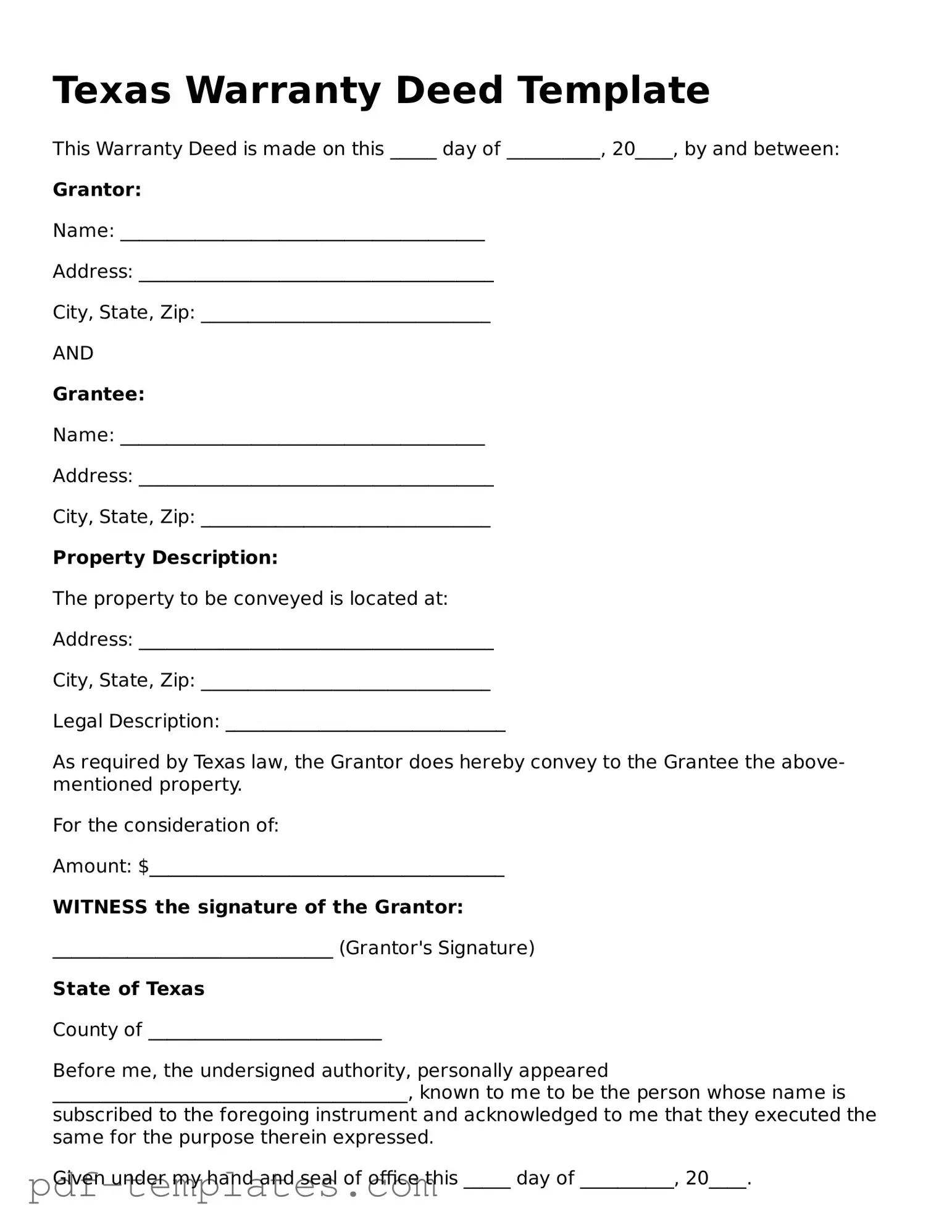The Texas Deed form is similar to a Warranty Deed. A Warranty Deed provides a guarantee from the seller that they hold clear title to the property and have the right to sell it. This document protects the buyer by ensuring that there are no undisclosed claims or liens against the property. The seller is responsible for any issues that arise related to the title, making this type of deed a secure option for property transfers.
Another document akin to the Texas Deed is the Quitclaim Deed. Unlike a Warranty Deed, a Quitclaim Deed does not offer any guarantees about the title. It simply transfers whatever interest the seller has in the property, if any. This type of deed is often used between family members or in situations where the parties know each other well and trust that the title is clear.
The Special Warranty Deed is also comparable to the Texas Deed. This document provides a limited guarantee from the seller, stating that they have not caused any issues with the title during their ownership. However, it does not cover any problems that may have existed before the seller acquired the property. This type of deed is often used in commercial real estate transactions.
The Bargain and Sale Deed shares similarities with the Texas Deed as well. This document implies that the seller has the right to sell the property but does not guarantee a clear title. It is often used in foreclosure sales or tax sales, where the seller may not have full knowledge of the title’s history.
A Deed of Trust is another document that relates to the Texas Deed. While not a deed of ownership, it secures a loan by transferring title to a trustee until the borrower repays the loan. This document is commonly used in real estate transactions involving financing, ensuring that the lender has a claim to the property if the borrower defaults.
The Grant Deed is also similar to the Texas Deed. It conveys ownership of property and typically includes assurances that the seller has not transferred the property to anyone else and that the property is free from encumbrances, except those disclosed. This document provides a middle ground between a Warranty Deed and a Quitclaim Deed in terms of security for the buyer.
To secure your rights efficiently, consider utilizing the Texas General Power of Attorney form, which empowers an agent to make crucial decisions on your behalf. For further insights, refer to this comprehensive resource on the General Power of Attorney.
Finally, the Executor’s Deed is comparable to the Texas Deed in that it is used to transfer property from a deceased person's estate. This document allows the executor to sell or distribute property according to the will or state law. It often includes language that indicates the transfer is made without warranties, similar to a Quitclaim Deed.
